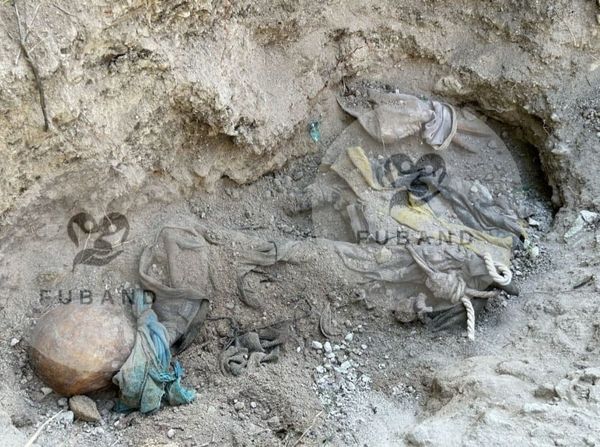
A week after Hurricane Helene made landfall in the US, search-and-rescue teams continue to look for missing people in parts of the south-east that were devastated by the storm, and nearly a million people in the region remain without power.
Officials have reported at least 215 deaths across six states, and have warned that the toll is expected to rise as recovery efforts continue. A separate NBC News tally found that at least 202 people have died, including at least 98 in North Carolina, 19 in Florida, 33 in Georgia, 39 in South Carolina, 11 in Tennessee and two in Virginia.
Hurricane Helene made landfall last Thursday in Florida’s Big Bend region as a category 4 hurricane. It then weakened to a tropical storm and moved through Georgia, the Carolinas and Tennessee, bringing strong winds, rainfall, storm surge and devastating flooding to the region, destroying communities.
“Despite the dire, dire predictions, the impacts were probably even worse than we expected,” said Steve Wilkinson, the meteorologist in charge of the National Weather Service’s regional office in Greenville-Spartanburg, South Carolina.
The storm was one of the three deadliest US hurricanes this half-century, with only 2005’s Katrina and 2017’s Maria taking more lives. And over the past 60 years, only 1969’s Hurricane Camille – which also triggered flash flooding in Appalachia – was deadlier.
As the planet warms due primarily to the burning of fossil fuels, hurricanes are bringing stronger winds, higher storm surges and record rainfalls, rendering them deadlier, more destructive and more costly.
The cascading effects of Hurricane Helene, including the decimation of homes, infrastructure, economies and social networks could result in thousands of additional deaths over the coming years, an analysis published in the journal Nature on Wednesday suggests.
The assessment of the 501 cyclones that affected the US between 1930 and 2015 found that hurricanes and their after-effects affected mortality for up to 15 years after the storm, leading to 7,000 to 11,000 excess deaths on average. The study estimates that by that measure, cyclone-related deaths account for as much as 5% of all deaths annually in the lower 48 states.
Helene has also caused power outages and disrupted cellular service in many towns and cities.
As of Thursday morning, 350,000 people were without power in South Carolina, as well as just under 300,000 people in North Carolina, and 260,000 in Georgia, according to PowerOutage.us.
In North Carolina, many residents in the mountainous western part of the state have been isolated without electricity or phone service since last week.
In North Carolina’s Buncombe county, which includes hard-hit Asheville, at least 72 people died from flash floods, mudslides, falling trees, crumbled roads and other calamities. County officials said that the national guard was assisting in distributing food, water and supplies, and many residents are being encouraged to conserve water.
Residents of Swannanoa and Black Mountain, just outside Asheville were for days unable to leave due to road closures from mudslides and floodwater. There are still communities that search-and-rescue teams cannot access.
“I don’t even have any words for it, just complete devastation,” said Hannah Calloway, 28, a resident of Swannanoa. “I watched the community I grew up in, everything vanish, wash away that easy.”
Calloway stayed through the storm with her partner and seven-month-old child.
In North Carolina’s Alleghany county, rescuers have been going door to door, bringing supplies and checking on residents who have gone nearly a week with no power. Jason Long, chief of the county’s volunteer rescue squad, said his team had conducted two successful water rescues.
“I’ve never seen anything like it,” Long said of the destruction. “People’s whole homes have just vanished off the mountain from landslides.”
Joe Biden visited Georgia and Florida on Thursday to assess the damage there caused by the hurricane. This follows the US president’s visit to the hurricane-affected areas of North and South Carolina on Wednesday.
Biden has approved federal disaster assistance for survivors in designated counties in Florida, Georgia North Carolina, South Carolina and Virginia.
The Biden administration has stated that over 4,800 personnel from across the federal workforce are deployed to the affected areas across the country, with more than 1,000 from Fema.
On Wednesday, Biden directed the defense department to deploy up to 1,000 active-duty soldiers to reinforce the North Carolina national guard, to help deliver supplies, food and water to isolated communities.
More than $10m has been provided directly to those affected by the stormand as of WednesdayFema had shipped over 8.8m meals, more than 7.4m liters of water, 150 generators and more than 225,000 tarps to the region, officials said.
Search-and-rescue teams have conducted nearly 1,500 structural evaluations and hundreds of rescues and evacuations and nearly 6,000 members of the national guard were deployed to the region, the homeland security secretary, Alejandro Mayorkas, said this week.
On Wednesday, Kamala Harris visited Augusta, Georgia, to survey the devastation caused by the storm.
The US vice-president and Democratic nominee is scheduled to visit North Carolina in the coming days. Donald Trump, the Republican presidential candidate and former president, visited Georgia earlier this week.
The path from Helene can be seen from space with all of the power outages the day after it ripped through the Southeast.#scwx #ncwx #gawx pic.twitter.com/ku2BgTJky4
— NWS GSP (@NWSGSP) October 2, 2024
More rain is expected in Florida in the coming days, with the National Hurricane Center (NHC) keeping an eye on an area of interest in the Gulf of Mexico. Though it currently has only a 30% chance of developing into a tropical depression, the weather system is expected to drop several inches of rain across the Gulf coast and parts of Florida within the next week. The parts of North Carolina, South Carolina and Georgia that were most affected by Helene are not expected to see heavy rains.
On Thursday, Hurricane Kirk, a category 4 major storm,was about 2,000 miles (3,200km) east of the northern Leeward Islands and expected to strengthen as it moves north-west, the NHC said.
While it is not currently expected to hit land, it could bring dramatic ocean swells to the Leeward Islands east of Puerto Rico on Friday, Bermuda and the Greater Antilles on Saturday and the Bahamas and the US east coast by Sunday.
“These swells are likely to cause life-threatening surf and rip current conditions,” the NHC advised.
The Associated Press contributed







